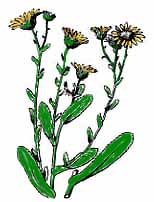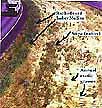CRAIG'S JUICY NATIVE GRASS
GOSSIP & Research
No. 18- July, 2005
HISTORICAL INFORMATION on Workshop for Caltrans, Deldot and
BLM - 2000-2001 NATIVE PLANTS FOR ROADSIDES - GRADE ONE
- "INTRODUCTION TO THE INNOVATIVE USE of LOCAL NATIVE PLANTS
for ROADSIDES, MITIGATION SITES and MANAGING PUBLIC LANDS"
Edited, published and Copyright © 2005
by Craig Dremann of The Reveg Edge (sm).
P.O. Box 361, Redwood City, Cal. 94064. Phone (650) 325-7333 e-mail
The URL of this issue is: https://www.ecoseeds.com/juicy.gossip.eighteen.html
or https://www.ecoseeds.com/workshop.html
If you would like to read other issues, see the index:
https://www.ecoseeds.com/juicy.html
HISTORICAL INFORMATION on the Workshop for
Caltrans, Deldot and BLM - 2000-2001
NATIVE PLANTS FOR ROADSIDES - GRADE ONE - "INTRODUCTION TO THE INNOVATIVE USE
of LOCAL NATIVE PLANTS for ROADSIDES, MITIGATION SITES and MANAGING
PUBLIC LANDS" - Including 14 Exercises.
A Workshop was
conducted for several of the districts in Caltrans and the Delaware
Dept. of Transportation in 2000, plus the Bureau of Land Management
in 2001, to raise the understanding of roadside vegetation practices,
specifically how to manage and utilize local native plants.
Once a public land
management or highway management agency can obtain their own local
native seeds, a major part of the workshop was to outline a process
to successfully get those seed established.
Prior to each workshop,
participants were asked to submit their top-10 list of questions
they wanted answered about the use of native plants, and those
questions were incorporated into the agenda if possible. You can
read the compiled lists of participant's requested agenda items
linked to each workshop, below.
The core of the classwork was to discuss 14 Exercises and answer
the questions posed by the pictures in each Exercise. The pictures
and questions from the workshop are shown below. Each participants
received a certificate at the completion of the workshop.
This was the first in a series of training session with
Craig Dremann, research director and co-owner of The Reveg Edge,
a private outside-training company,
experienced with native plants since 1972
Box 609, Redwood City, CA 94064 (650) 325-7333
Copyright © 2000, 2001 by Craig
C. Dremann, all rights reserved.



Grindelia............California poppy...Foothills needlegrass
Perennial Cal. natives that stay green all summer without
irrigation, and don't require mowing.
Drawing from Abrams' Illustrated Flora of the Pacific States,
Stanford Univ. Press. Color by Photoshop.
The one-day training session was brought
to the participant's locations:
Re-establishment of weed-free,
self-sustaining native ecosystems for full-sun, non-riparian,
unirrigated areas: utilizing direct seeding of local native seeds.
The workshop opened with a basic outline of how to
get started with local native plants, and part of the afternoon
session is out in the field. Workshop ran 9 AM to 4 PM, unless
otherwise noted. The agenda covers what is listed below, and the
final agenda will include items requested by the participants:
-- LOCAL NATIVE PLANTS have something useful for everyone:
-- ENVIRONMENTAL - use your species surveys to pick the best revegetation
plants.
-- LANDSCAPE Architecture - cut back your species lists to only
the successful ones.
-- STORMWATER - bioengineering with local natives can resolve
stormwater issues.
-- MAINTENANCE is the key to roadside native plants, assuring
success for everyone.
-- WHAT ARE local native plants, colonizers, seed transfer zones
and ecotypes?
-- EVALUATING different native species in the field for your various
purposes.
-- HOW TO USE native plants and not create new Endangered Species
concerns.
-- R/W LOCAL SEED sources: how to protect for the future and utilize
them.
-- TEST PLOTS: their value in making every project a success in
less than one year.
-- MIXES, hydroseeding, and other methods of installation and
materials to utilize.
ALL PARTICIPANTS were asked to >>> complete the
web page SURVEY <<<
as the survey results were used to form the final agenda for
the workshop.
(All the participant agenda survey results can be found linked
to the workshops listed below).
ALSO>>>ALL PARTICIPANTS were asked to check the web
pages below
and prepare their answers to the following exercises for the class:
(click links to see each exercise individually and print off)
14 EXCERCISES, click on each link
to see the picture and answer the questions.
 Exercise One:
Exercise One:
Landscaping with one gallon container stock of native bunchgrass:
Failed, why?

 Exercise Two:
Exercise Two:
Direct sowing with natives: Immediate failure and success, why?

 Exercise
Three:
Exercise
Three:
Direct sowing with natives: Long term failure or success can
be
determined by checking the seed mix and examining these
two pictures.

 Exercise Four:
Exercise Four:
Maintenance practices today can cause long-term problems or
protect natural resources for decades into the future. Why?
 Exercise
Five: The story of burns, what can they tell you?
Exercise
Five: The story of burns, what can they tell you?
 Exercise Six:
Exercise Six:
Ground covers in the past were maintained with herbicides, now
what?
 Exercise Seven:
Exercise Seven:
The Hypothetical Case of the Out-of-Place Seed Mix: What doesn't
belong here?

 Exercise
Eight:
Exercise
Eight:
Beauty examples of roadside native plants in and around Yosemite:
What is similar?
 Exercise Nine: What can a "common
garden study" show about native plant genetics and ecotypes?
Exercise Nine: What can a "common
garden study" show about native plant genetics and ecotypes?
 Exercise
Ten: Existing weeds and their seed bank, if they are where
you want to plant natives, what to do?
Exercise
Ten: Existing weeds and their seed bank, if they are where
you want to plant natives, what to do?
 Exercise Eleven: Evaluation of a Planting:
What is the BREAK EVEN RATIO between native plants and exotics?
Exercise Eleven: Evaluation of a Planting:
What is the BREAK EVEN RATIO between native plants and exotics?

 Exercise Twelve: THE
DEAD AND LIVING grasses found in June: how can information about
them be used for your vegetation management plans?
Exercise Twelve: THE
DEAD AND LIVING grasses found in June: how can information about
them be used for your vegetation management plans?
 Exercise Thirteen: The two percent solution,
how is it important?
Exercise Thirteen: The two percent solution,
how is it important?
 Exercise Fourteen: Landscape painting
directly on the land.
Exercise Fourteen: Landscape painting
directly on the land.
LIST OF WORKSHOPS CONDUCTED
- CALTRANS
District 1: Eureka (13 agenda items)
- Completed - August 15, 2000.
District 2: Combined with District 3
- (1 agenda item)
District 2 & 3 combined: Yuba City - (10
agenda items) - Completed - Sept. 12, 2000
District 4: San Ramon - (33
agenda items) - Completed
- August 8, 2000
District 8: San Bernardino - (48 items)
- Completed - May 16, 2000








>> see PICTURES and stories about
the native plants we saw in the field at D-8.
District 11 & 12: San Diego (spring 33 items)
Completed - March 30, 2000
District 12 II: - San Diego (autumn
9 items)- Completed
- Sept. 26, 2000
SACTO. HQ: Davis - (16
agenda items) - Completed
- June 14, 2000
OTHER WORKSHOPS (2000-2001):
DELAWARE Roadsides- Tuesday October
17, 2000 - Wilmington - Completed<< Afternoon field session,
we visited DELDOT native plant test plots.
BLM BAKERSFIELD: Monday August 13, 2001
- (agenda items)
BLM SUSANVILLE: "Reveg Workshop"
Tuesday October 2, 2001 - USFS Lassen National Forest, 2550 Riverside
Dr., Rooms Caribou 1 & 2 - (agenda
items)
Updated December 24, 2022 - The
Reveg Edge Ecological Restoration service


























